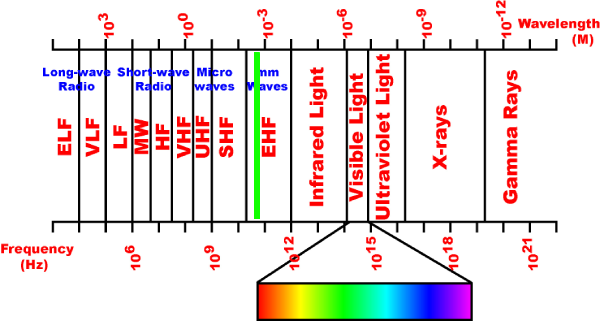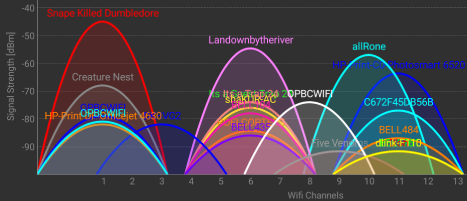Why Bluetooth needs Adderall
How bouncing around like crazy makes your audio cleaner
Bluetooth, you've come across it at some point, whether you own wireless headphones or your car allows you to connect your phone to accept hands-free calls, I'm sure you've seen it. As with any wireless data transmission protocol, it sends information through the air via radio waves on a certain frequency[1]. I'm sure you've seen the graph of radio spectrums.

Global wireless standards such as GPS are globalised and laid out in standards from IEEE (Institute of Electrical and Electronics Engineers)[2]. All remaining radio frequencies are locally auctioned off (e.g your local jazz radio station may have rented the 103.2 radio station, look at the US's radio allocation here (absolutely mental!)). The IEEE (and governments) are careful when assigning new frequencies to ensure GPS signals aren't drowning out your TV remote's signals or that your local pop music station isn't overlapping your home WiFi signal. What's interesting is that despite such planning, nothing's perfect and the Bluetooth and WiFi standards were assigned the same block of radio frequencies. Curtly, WiFi has 11 channels you can choose to broadcast from. Small interferences and quality of antennas etc. means that your channel will be wider than a channel and bleed into other channels. It's an unwritten rule that you choose either channel 1, 6 or 11 to avoid interference. Some WiFi emitters are silly and emit between these channels and mess everyone up.

Bluetooth then had to solve the problem of reliably streaming data to your Bluetooth device without any "gaps" in the frequencies to guarantee free air on. Perhaps you've used a walkie talkie to talk to someone but you hear talking on your frequency and you and your mate agree to go to a new frequency. Much better, this frequency is clear, at least it was, for the last 20min, someone else has joined this frequency and you must change your walkie talkie frequency again. Bluetooth does this, just faster and smarter. This is where "it's not stupid if it works" comes in. When Bluetooth devices pair, they agree on a pattern of frequencies to switch between. There are 79 frequencies they can cycle through, and they cycle through the 79 frequencies 1600 times a second.

For reference, the human eye checks for differences in your vision ~100 times a second[3]. Bluetooth hops 16x faster than the human eye. The thinking is, going back to our walkie talkie example, if you stick to one channel and hope for the best, it might start out fine, but once the channel gets cloudy, you have to change over, a process which can take a few seconds to communicate. By the time your Bluetooth phone call has dropped out 3 seconds, you've already lost the battle. This is where the fast hopping brilliance comes in. If half of the 79 frequencies in a second have interference and those data packets get lost, you have 800/1600 packets of data, which is more than enough to trick the ear into thinking audio was continuous the whole time. This does become an issue once this number drops to 20 "clear" frequencies or 400/1600 successful attempts. Decades old Bluetooth versions did this, but the standard was improved. Now, both Bluetooth devices still fundamentally do the same agreed random pattern, but once a noisy frequency is found, they both agree to move on to the next random frequency when the noisy one comes up (it then attempts on the noisy frequencies often to see if it clears up). This makes data transmission extremely successful, but it doesn't need to be.

Bluetooth is different than WiFi in the sense that Bluetooth is more designed to guarantee a continuous stream of data that isn't true to the original data. Bluetooth aims to stream your music or phone call without cut offs, with the trade off of accepting 10% data loss. But if I were to transfer a photo over Bluetooth and I get the photo on the other end and 10% of the photo is black, I'm not going to be happy. (Yes Bluetooth file sharing is everywhere, and you always get all the data, but this is slow, and in my experience awful. Every time you're transferring a file over Bluetooth it is better to do over WiFi. Simply look at Apple's AirPlop, it uses WiFi and not Bluetooth.)
So, next time you're listening to music over Bluetooth, appreciate the ducking and weaving it does around WiFi channels 100,000 times a minute[4] just so you can have a continuous audio stream.